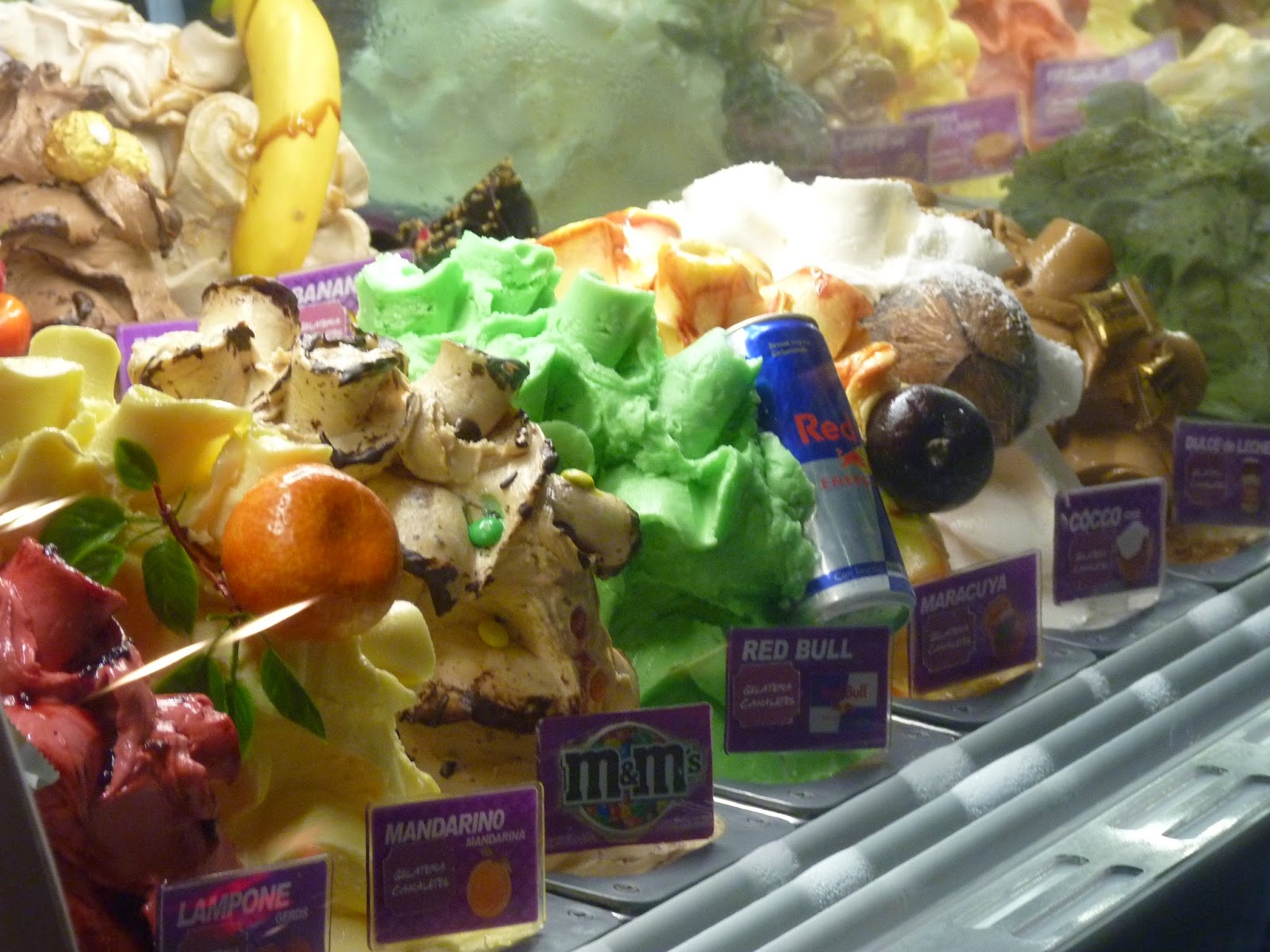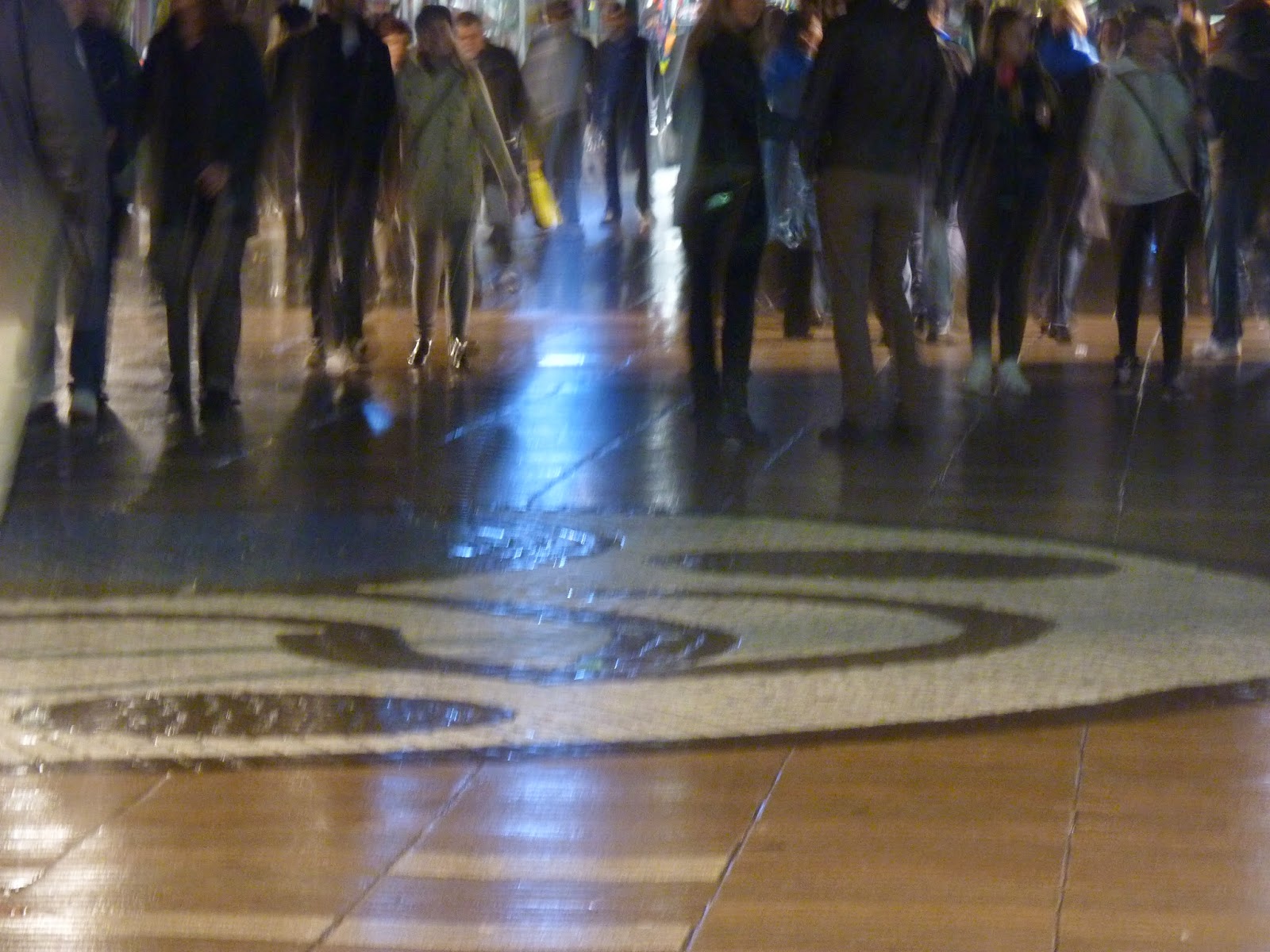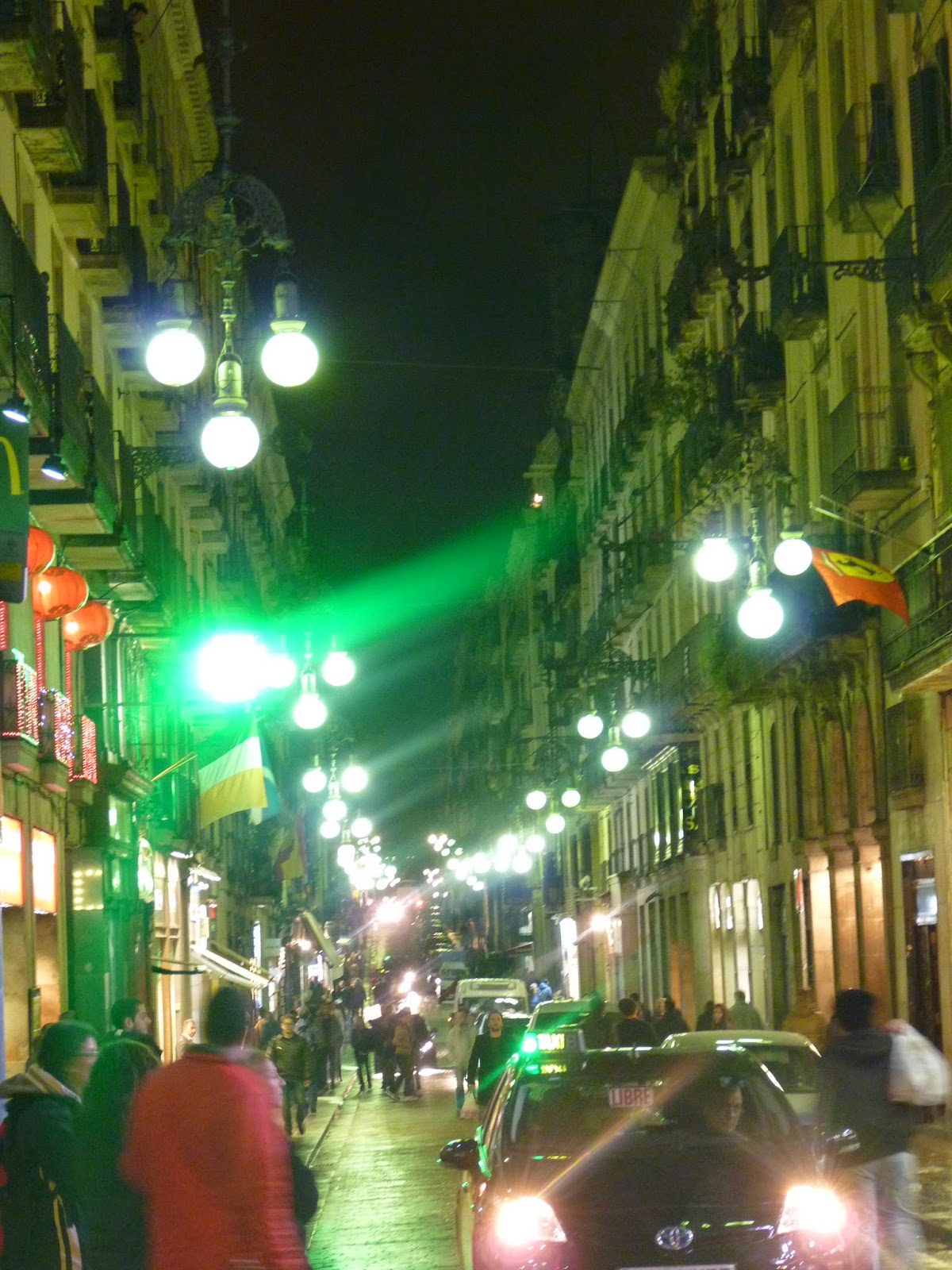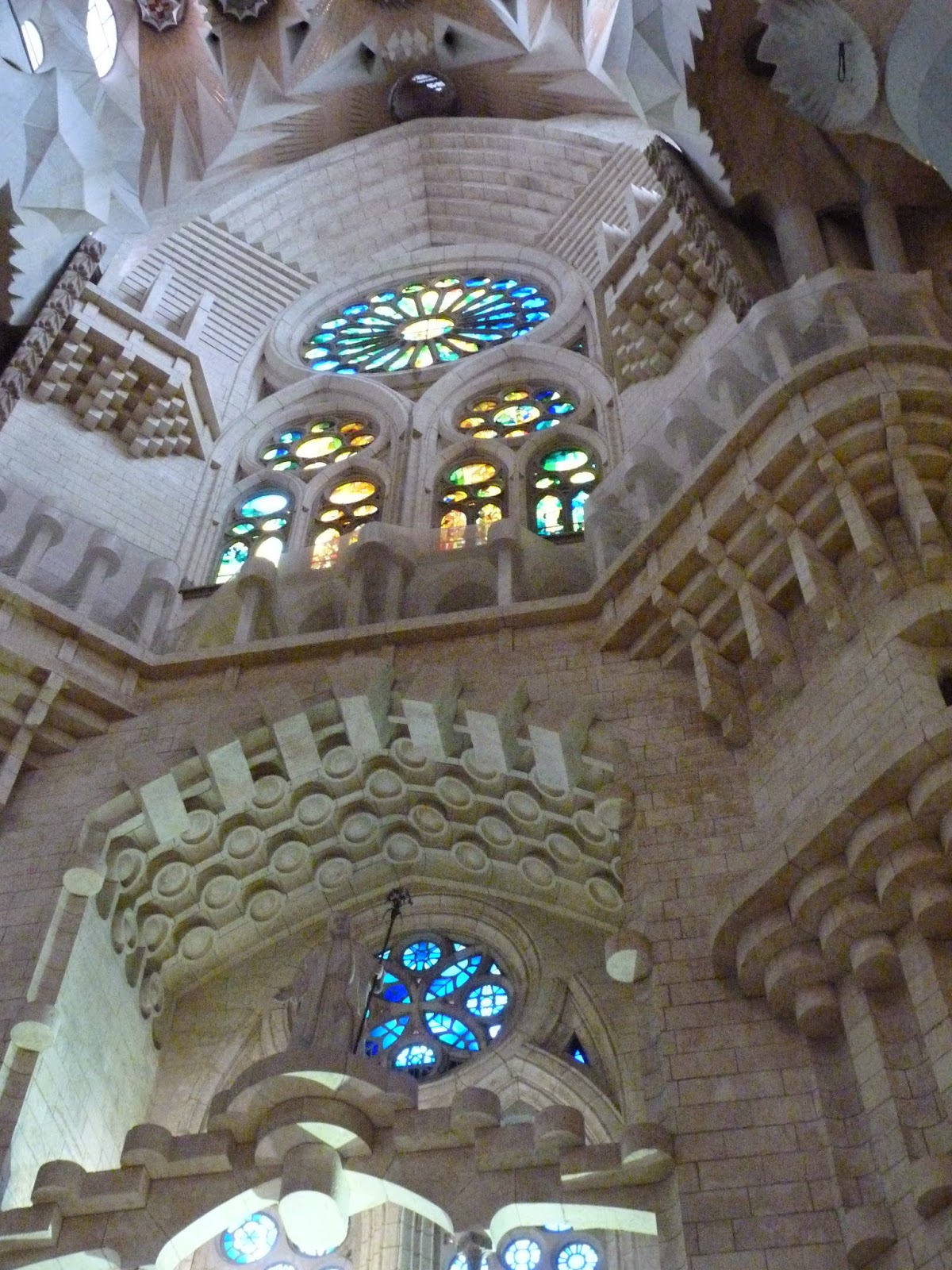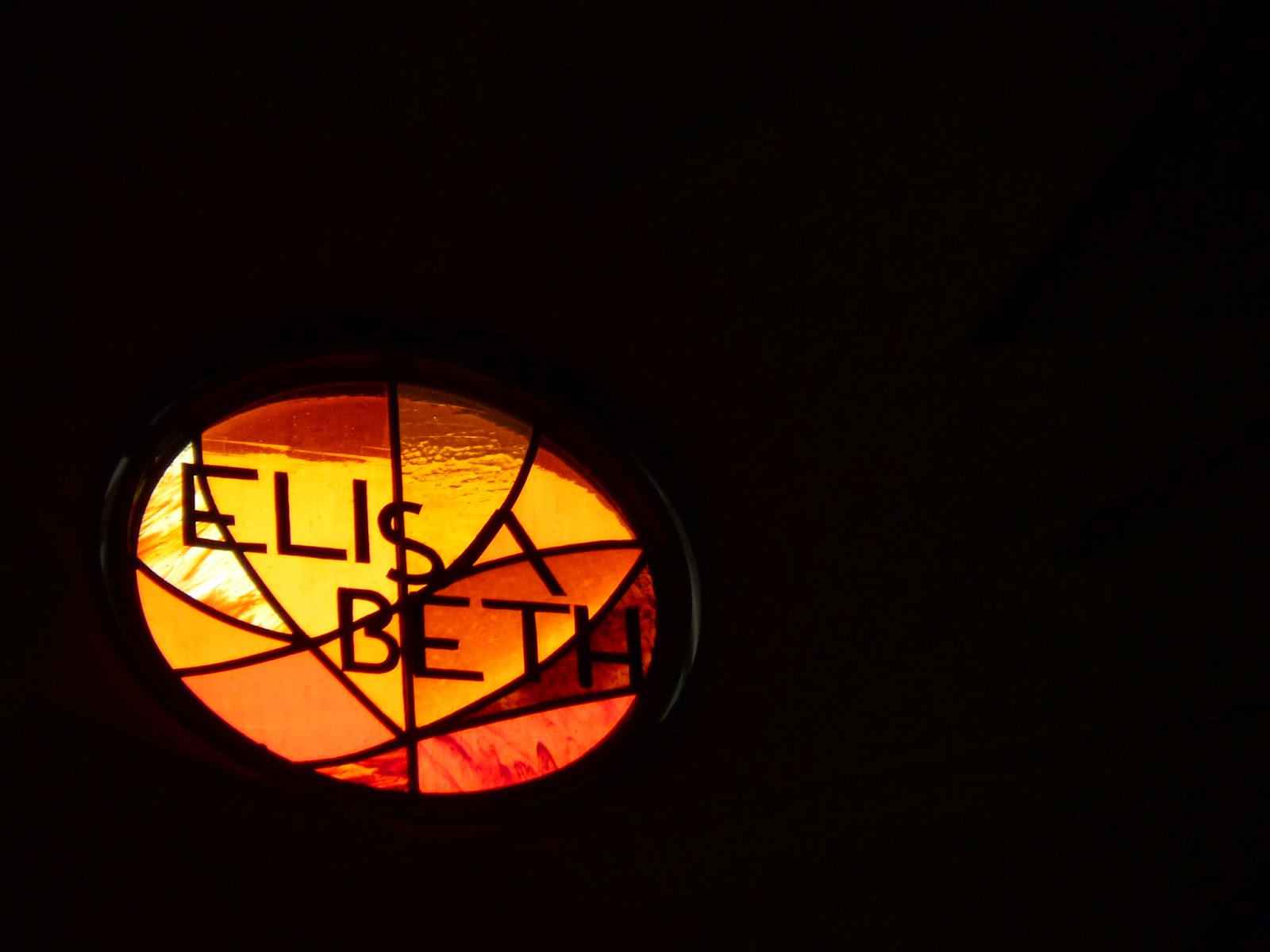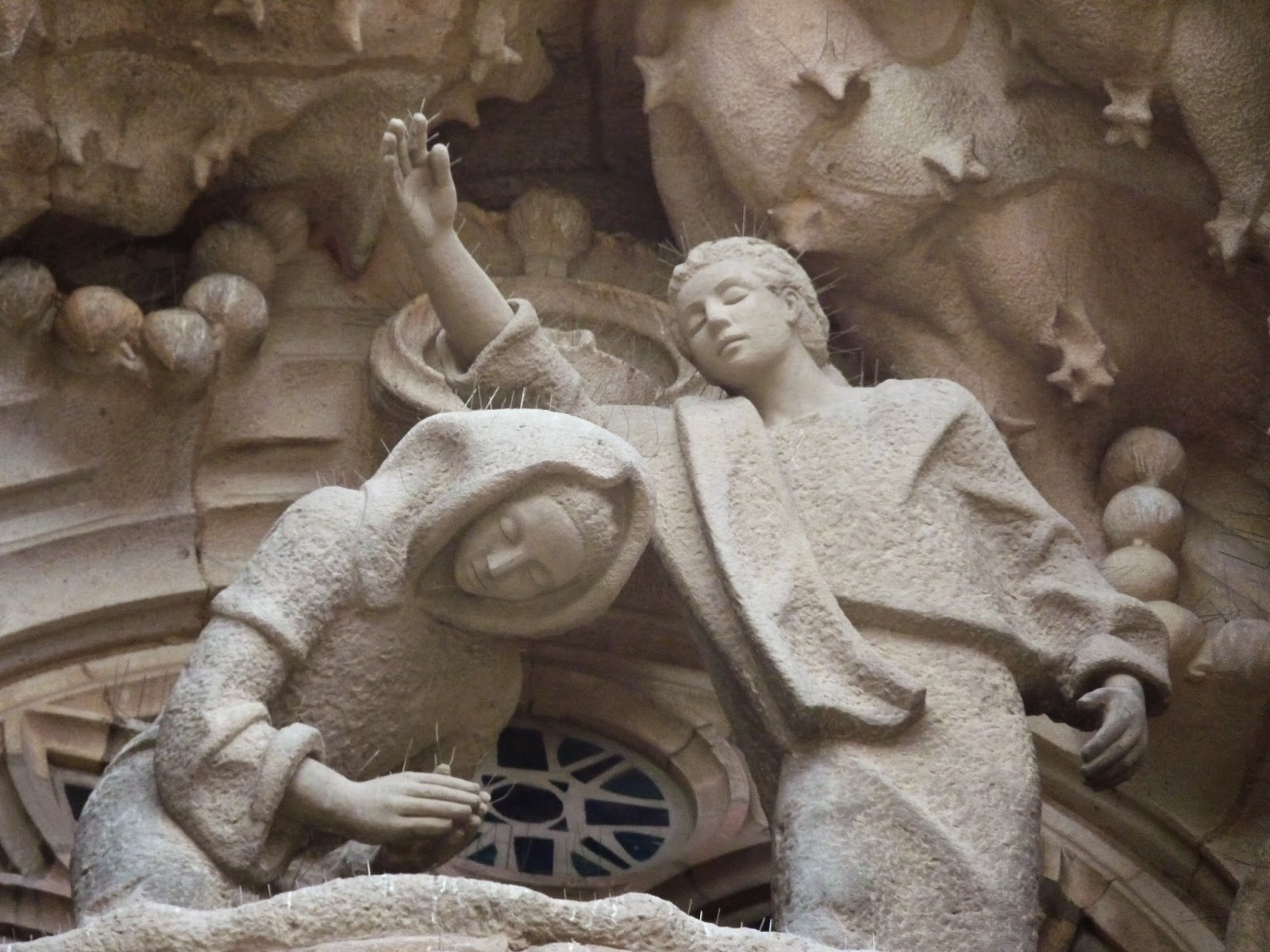Hola!
Welcome to my post about my trip to the Basilica and Expiatory Church of the Sagrada Familia, a Catholic church in Barcelona designed by Catalan architact Antoni Gaudí.
Although it is technically not a cathedral as it is not the seat of a bishop, it is almost universally referrred to as one, so that is the term I will use.
Organising through my thousands of photos for this blog post has been a long process but a labour of love. I have rarely been so spoilt for beauty. The Sagrada Familia is a gift and joy to a writer and photographer, from both the outside and inside.
I do not see myself as particularly religious but there is something about seeing such devotion and such an effort to create something out of love for both God and the community that is incredibly moving.
I first visited the cathedral on a school trip when I was thirteen. We didn't go inside, we just walked round and admired the external architecture.
I remember looking up and it being so, so big - I had not envisaged it being so tall a building. I guess you would call it a form of the numinous, though I believe I have actually felt the numinious and this was a different feeling, more a kind of childish awe and amazement.
As a result, it was, after Liam, my second most important thing to see in Barcelona. I hopped off the tour bus - a bit disgruntled as I had got comfy and it was overcast - and stood back to see if it had the same effect on me as seven and a half years ago.
It didn't - I think that first feeling was something only a child can feel. But I did feel a huge admiration for the people tirelessly working to finish this great masterpiece, and for all those that have gone before since work began one hundred and thirty-three years ago.
In Year Eight Art at school, we designed buildings based on Gaudí's style of incorporating animals. The centrepiece of mine was a spider crab. It was great to see the actual animals on the Sagrada. There are so many - these lovely snails are just the tip of the iceburg.
Outside, there is a scale model of how the finished cathedral will look - ie, even taller - by quite a long way - than it is now. It is quite flabbergasting - and that's not a word I use lightly!
It should be finished in 2026. With that huge central spire to build as well as a second large spire and four more "ice-cream cones" as I affectionately call them, and the glory façade to finish, it's a big job for ten years.
However, should it come off, it will be amazing. To be able to see it finished - to be able to say I saw that, that that happened in my lifetime, would be incredible beyond words.
And if it is finished by 2026, the anniversay of Gaudí's death, that would be the final touch of beauty. In one hundred years, his dying dream will have become a reality.
I began my tour at the Nativity Façade. The first façade completed, and the only one begun in Gaudí's lifetime, it represents his vision for the cathedral.
My personal reaction to it has evolved: at first I liked it because it impressed my thirteen-year-old self greatly. I then began to find it a bit too crowded, with too much going on - it made me feel slightly overwhelmed.
I still feel that way looking from a distance, but looking up close at the individual elements, I can see the people, animals, elements and scenes are, in themselves, quite simple and there is a deep honesty at the heart of the façade.
Who is the old woman? I don't remember her from the Nativity...
Of the two front pillars, the left is supported by a turtle, represting sea and the right by a tortoise, representing land.
I feel sorry for them - the whole world on their shoulders (or, rather, shell)! Yet at the same time, holding up a cathedral is a great honour and I'm sure they are very proud even if they do grumble some days.
I love the rare hint of colour in the form of the ivy-covered door. I believe that at one point all the figures of the façade were to be coloured, but that doesn't seem to have happened, at least not yet.
Then we go inside, into a realm of colour and space.
I absolutely adore the stained-glass windows - they remind me of those of Galway Cathedral and Liverpool Metropolitan Cathedral in the style and shapes. I love how there are no religious figures, just beautiful colour and light.
There are also names - whether they are religous, or perhaps the names of donators to the cathedral, I'm not sure. But I was glad to find an "Elisabeth"!
The pillars are supposed to resemble trees. I think they also resemble bones, making the nave feel like the inside of some great animal.
I like how the Evanglists are depicted in their animal representations - it matches with the strong nature-theme of the nave. Also, the thing above the crucifix (does it have a name?) to me resembles a jellyfish, furthering the theme.
For me the steps winding up into the towers ressemble the double-helix structure of DNA.
Obviously this wasn't part of Gaudí's original vision - the discovery came after his time - but I appreciate it because for me you can't nature-theme something without referencing DNA. It is, along with RNA, at the heart of everything in nature. (There's the biologist in me coming out!)
Here are the names I mentioned. It was good to see names from several different cultures.
The best window, naturally
One of the most emotional parts of my trip was looking down through a window into the crypt where Gaudí now lies.
It is so right and fitting that he is, and will forever be, here, in his masterwork, his pride and joy. Perhaps he will be able to sense when it is finished, and will be as proud and happy as he deserves to be. I hope so.
I thought, "thank you," and left him to sleep.
Gaudí's grave
Back outside, with light rain now falling, I enjoyed more of the Nativity Façade. I believe the animal below is a toad; however, I know somewhere on the Façade there are chameleons to signify change so maybe that's what he is.
Some of the many critters hiding in the ivy:
I went inside one more time and came out via the Passion Façade,
What a gorgeous display, like the sunrise
This makes me think of something marine; shell or coral
"Blessed is he who comes in the name of the Lord"
While I feel the nave is like a skelton - in a good, beautiful way, a celebration of life and strength - the Passion Façade was designed to look like bone in a bare, hollow, sad way, to represent the final days and death of Jesus.
The cryptogram below appears in at least two parts of the cathedral - here and on one of the doors - and it intrigued me. What was its secret?
I asked my mother to research it as I was lacking Internet access and she found that it is essentially what I grew up calling a "magic square" (and which I used to be smug about knowing the secret to creating).
All the rows and columns add up to the same number. Here the corners do as well. It is thirty-three, the age of Jesus at his death.
Considering the known links between maths and nature as well as just how simple and sad the cryptogram is, I think including it was another great move.
"And what is the truth?"
"Jesus of Nazareth, King of the Jews."
This onlooker was designed to look like Gaudí, in tribute.
I then visited a little museum space where there is a model of Gaudí's study and of the classroom where he instructed architects.
Overall, as you can probably tell, this was a really special experience for me. I'm actually glad it was overcast and then raining as I feel it added to the experience, creating an ambience.
I hope you enjoyed looking through the photos as much as I enjoyed taking them - ie, a great deal. I could never tire of being in, admiring and working creatlively with this building - it is one of the most unique and inspirational places I have ever had the delight of visiting.
Thanks for reading,
Liz x
